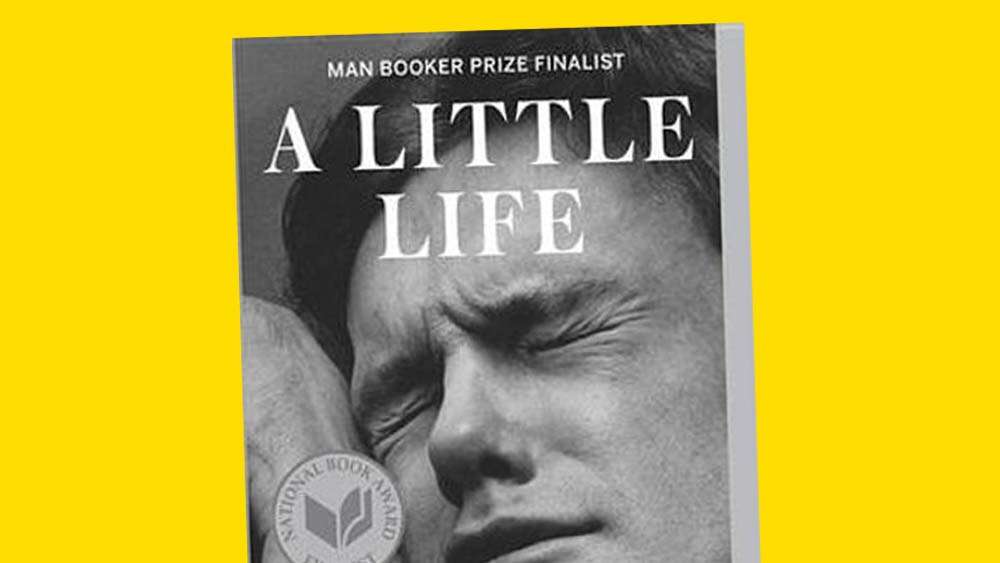*A Little Life* Book: An In-Depth Exploration

A Little Life, Hanya Yanagihara’s critically acclaimed novel, has captivated readers and sparked significant cultural conversations. This comprehensive exploration delves into the book’s various aspects, examining its genre, themes, authorial style, and lasting impact. We will analyze the text through the lenses of different categories, providing a thorough understanding of its complexities and resonance.
1. Book Genres and Literary Classification
A Little Life defies easy categorization. While primarily classified as a contemporary novel, its sprawling narrative, exploration of profound trauma, and operatic style also align with elements of literary fiction, bildungsroman (coming-of-age story), and even elements of melodrama. The novel’s length and intricate plotting challenge traditional genre boundaries. Its focus on the deep emotional lives of its characters, particularly Jude’s prolonged suffering, elevates it beyond typical commercial fiction. The realistic portrayal of complex relationships alongside the exploration of the lasting impacts of childhood trauma distinguishes it from purely escapist literature. The novel’s blend of realism and heightened emotional intensity positions it within a unique space in contemporary literature, blurring genre lines and defying easy classification.

Bestseller Status and Critical Reception
Upon its release, A Little Life quickly achieved bestseller status, becoming a phenomenon with millions of copies sold worldwide. However, its critical reception has been more divided. While many praised Yanagihara’s evocative prose, compelling characters, and unflinching exploration of trauma, others criticized its relentless bleakness, implausible plot points, and perceived indulgence in “misery porn.” These differing viewpoints highlight the novel’s power to provoke strong emotional responses and stimulate critical debate about the boundaries of acceptable suffering in literature. The book’s success as a bestseller, coupled with its controversial reception amongst critics, solidifies its place as a significant work within contemporary literary discourse.
2. Author: Hanya Yanagihara
Hanya Yanagihara is an American novelist whose work often grapples with complex themes of trauma, love, loss, and the search for meaning. Her previous novel, The People in the Trees, also explores themes of ethical ambiguity and human cruelty. While her writing style has been praised for its beauty, precision, and lyrical intensity, its emotional impact, particularly in A Little Life, has been a source of both admiration and contention.
Yanagihara’s Writing Style and Inspirations

Yanagihara’s writing is characterized by its immersive, detailed prose, drawing readers deep into the experiences of her characters. She employs a meticulous and often lengthy approach to character development, meticulously detailing their inner lives and relationships. Her use of precise language and descriptive passages creates a deeply engaging reading experience, despite the often harrowing nature of the narrative. The author’s own statements reveal a conscious decision to explore the depths of human suffering and the complexities of trauma. Whether intended as a commentary on societal norms or viewed as exploitative, the decision remains a central aspect of both her work and its reception. While the sources of her inspirations remain personal, the resulting profound emotional depth in her writing remains undeniable.

3. Reading Experience and Educational Value
Reading A Little Life is a significant undertaking due to its length and the intense emotional weight of its subject matter. The book demands considerable emotional investment from the reader, making it both a rewarding and potentially challenging experience. The novel’s relentless focus on Jude’s suffering has been a major source of both praise and criticism, with some praising the novel’s unflinching portrayal of trauma, and others accusing it of gratuitous suffering.
Life Lessons and Themes
Despite the bleakness of the narrative, A Little Life offers valuable insights into the nature of trauma, resilience, friendship, and love. The novel explores the enduring power of human connection in the face of adversity. It powerfully depicts the long-lasting effects of childhood abuse, and the complex ways in which individuals cope with and overcome such experiences. While not offering easy answers or simplistic resolutions, A Little Life compels readers to confront challenging issues, promoting empathy and understanding. The lasting impact of the novel is found in its examination of the human spirit’s capacity for both suffering and enduring love, inspiring introspection and promoting nuanced discussions around trauma and recovery.
4. Cultural Impact and Adaptations
A Little Life’s popularity has transcended the realm of literature, influencing various forms of art and media. The novel’s themes have sparked conversations about mental health, trauma, and the importance of friendship and support.
Stage Adaptation and Literary Influence
The novel’s popularity led to a stage adaptation, further expanding its reach and impact. The stage version, while maintaining the core themes, offers a unique interpretive lens through theatrical expression. A Little Life’s literary influence extends beyond its direct adaptations. Its exploration of trauma and human relationships has resonated with other writers and artists, influencing subsequent works that address similar themes. The novel has prompted important discussions within literary circles regarding the ethical considerations of representing trauma and the responsibilities of authors in depicting sensitive subjects. The novel’s enduring impact testifies to its power in sparking discussions and influencing creative works.
5. Libraries and Accessibility
A Little Life is widely available in numerous libraries, both physical and digital. Its accessibility ensures its continued discussion and study.
Archives and Preservation
As a significant work of contemporary literature, A Little Life will undoubtedly find its place in various literary archives and collections over time, ensuring its preservation for future generations. Its accessibility in libraries and digital spaces contributes to its ongoing cultural relevance and ensures continued engagement with its powerful themes.
In conclusion, A Little Life stands as a complex and multifaceted work of literature. While its controversial nature guarantees ongoing debate, its impact on readers and the literary landscape is undeniable. Its exploration of trauma, friendship, and love continues to resonate, prompting profound introspection and fueling critical discourse within various cultural spaces.